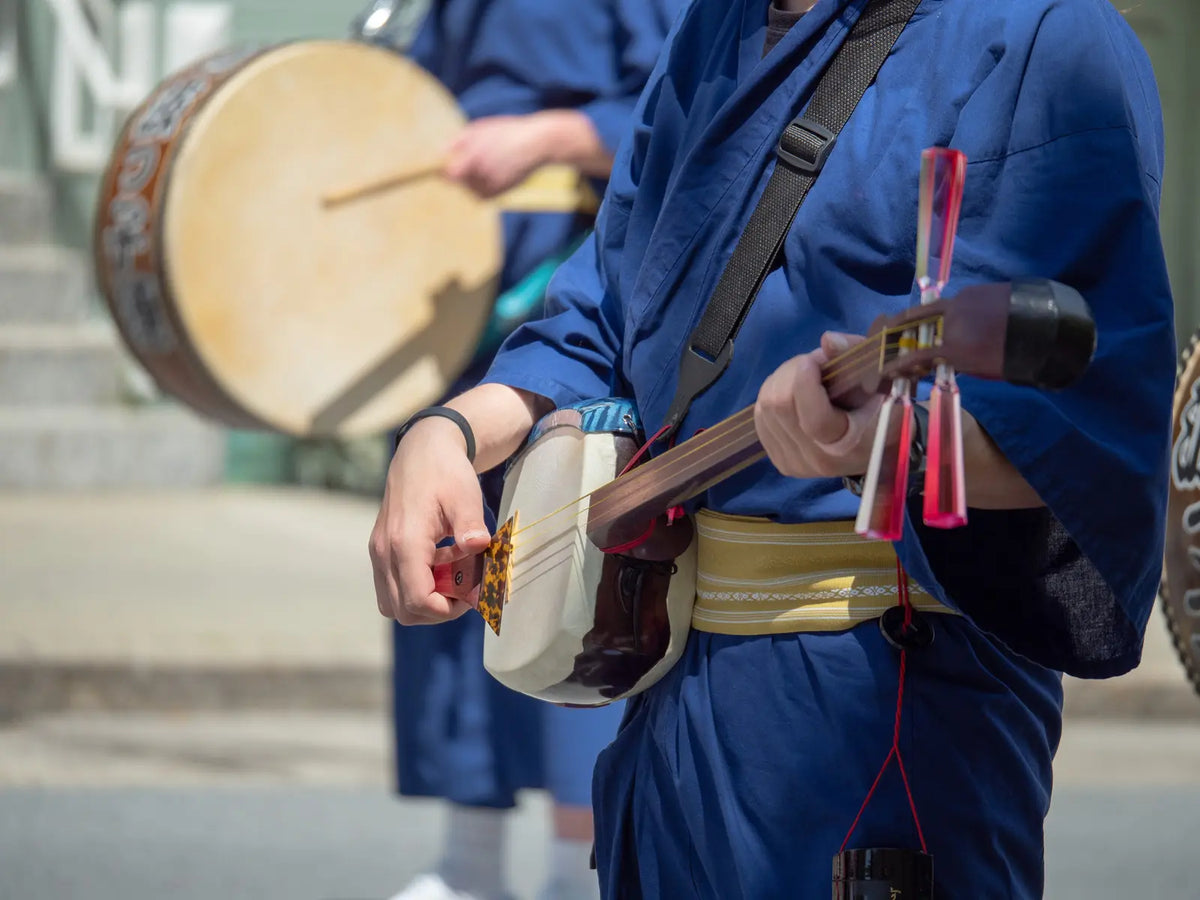

Introduction
The shamisen, a revered instrument in Japanese culture, resonates with the country's rich musical tapestry. Known for its expressive and melodic range, the shamisen is integral to Japanese classical music, folk traditions, and theater, demonstrating its cultural and historical significance.
What is a Shamisen?
The shamisen, often referred to as "three strings" in Japanese (sangen or samisen), is a unique instrument, featuring a slender neck and a rectangular body covered with animal or synthetic skin. Its three strings, traditionally made from silk or nylon, are played with a large plectrum called a bachi, offering a diverse range of sounds from delicate plucks to powerful strums.
The Origins and History of the Shamisen
The shamisen's origins trace back to the Chinese sanxian, which traveled to Japan via the Ryukyu Islands during the Muromachi period. It underwent cultural adaptations, becoming a vital part of Japan's musical identity. By the Edo period, the shamisen was a staple in kabuki and bunraku theaters, enriching performances with its evocative soundscapes.
Traditional Music Influences
- Jiuta emerged in the Kansai region, showcasing the shamisen alongside instruments like the koto and shakuhachi.
- Nagauta , linked with kabuki theater, became popular for its extended musical narratives.
- Min'yo , or folk songs, often feature the shamisen, reflecting the lives and stories of Japan's people.
How to Play the Shamisen
Tuning and Posture
The shamisen is typically tuned to C-F-C, with variations based on style. Players usually adopt the seiza (kneeling) position or sit cross-legged, placing the instrument on their right thigh. Holding the shamisen correctly and striking the strings with the bachi is crucial for producing its distinctive sound.
Basic Techniques
Mastering the shamisen involves precision in finger placement due to its fretless design, requiring practice in scales to develop muscle memory for accurate note production.
Types of Shamisen
- Hosozao (Thin neck): Used in nagauta ensembles for its light, agile sound.
- Chuzao (Middle neck): Favored in jiuta for its mellow tones and versatility.
- Futozao (Wide neck): Known for its robust sound, ideal for bunraku music and tsugaru-jamisen.
Craftsmanship of the Shamisen
Creating a shamisen involves meticulous craftsmanship, from selecting quality woods like Chinese quince and red sandalwood to shaping the instrument for optimal sound and durability. Modern ethical practices favor synthetic materials over traditional animal skins.
Genres and Evolution
Traditional Theater and Modern Music
The shamisen plays a central role in kabuki and bunraku, enhancing the drama and storytelling. In modern times, it has fused with jazz, rock, and electronic music, showcasing its adaptability and relevance.
Renowned Shamisen Players
Legends like Hiromitsu Agatsuma and Noriko Tadano have elevated the shamisen's profile, blending traditional techniques with contemporary influences and expanding its global reach.
Cultural Significance
The shamisen embodies Japan's cultural heritage, enriching festivals, geisha performances, and religious ceremonies. Its sound is synonymous with celebration and tradition, holding a special place in Japanese society.
Conclusion
The shamisen's timeless allure lies in its ability to connect Japan's musical past with modern expressions, inviting enthusiasts to explore its enchanting melodies and cultural depth. Whether you're a music lover or curious about Japanese heritage, the shamisen offers an engaging experience that transcends time.



